People are often surprised by the limited variety of traditional and antique Japanese furniture. Historically, rooms were open spaces, used for a variety of functions. There were no sofas or armchairs or beds. Small low tables used by day could be cleared and bedding laid out to be used by night. Large chests or cupboards, called tansu, were used to store everything from clothing to bedding to kitchen utensils. Tansu also functioned as the “business centers” of merchants and sea captains. In the Edo period, tansu size, design and decoration were indicative of status and rigidly controlled. With the advent of the Meiji Restoration in 1868, tansu design was freed from control and regional centers developed their own vernacular.
Styles of tansu include the well-known kaidan-dansu (step cupboard) used for both storage and access to upper floors, the rare and unusual kuruma-dansu (wheeled chest) which could be easily moved, many different styles of isho-dansu (clothing chest) used to store kimono, choba-dansu (merchants chest) used to store valuables and documents and, for the purposes of this post, mizuya-tansu (kitchen cupboard)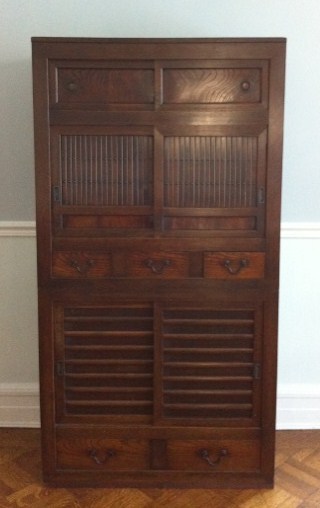 , which were the heart of kitchen storage. Like many tansu, mizuya tansu were made of two horizontal cabinet pieces that stacked one above the other, allowing for movement and flexibility, although they lack the carrying handles often found on smaller tansu. While depth is fairly constant, width can vary from narrow styles (30-40″) which tend to have simpler more symmetrical fronts to wider styles (60-80″) in which it is common to have an asymmetrical design with varied small doors and drawers. A particularly charming detail that is commonly found is a sliding door lined with chicken wire or paper allowing for some visual display and air movement.
, which were the heart of kitchen storage. Like many tansu, mizuya tansu were made of two horizontal cabinet pieces that stacked one above the other, allowing for movement and flexibility, although they lack the carrying handles often found on smaller tansu. While depth is fairly constant, width can vary from narrow styles (30-40″) which tend to have simpler more symmetrical fronts to wider styles (60-80″) in which it is common to have an asymmetrical design with varied small doors and drawers. A particularly charming detail that is commonly found is a sliding door lined with chicken wire or paper allowing for some visual display and air movement. 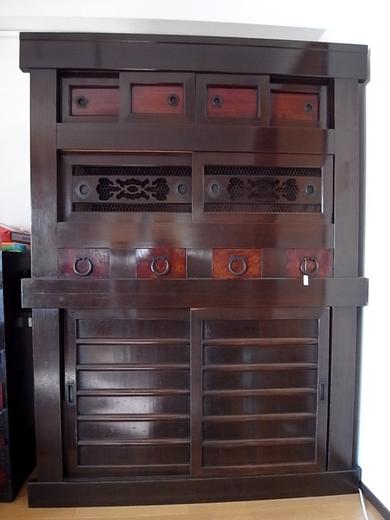
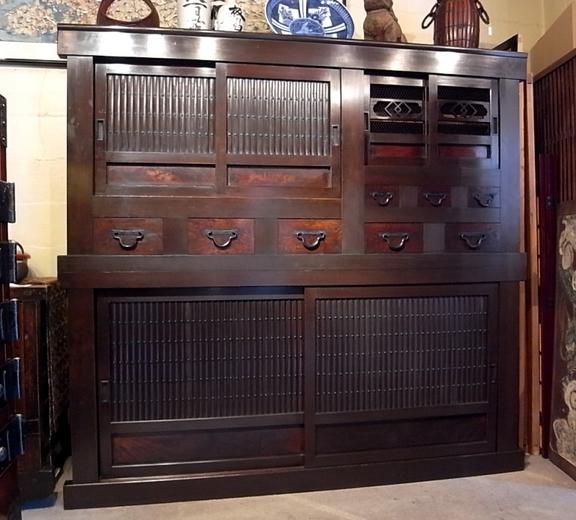
Today, adding a tansu into a design scheme is easy, as they work in both traditional and modern settings. Michael Smith uses a beautiful Edo period mizuya tansu in a completely modern kitchen, just in the manner for which it was designed. 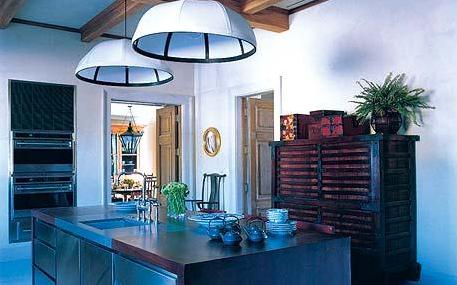
In the Japanese-inspired kitchen designed by Marguerite Rogers and featured in House Beautiful, traditional sliding doors based on tansu were used for the kitchen cabinets. The iron work details and wood joinery mimic the tradional techniques found on antique tansu.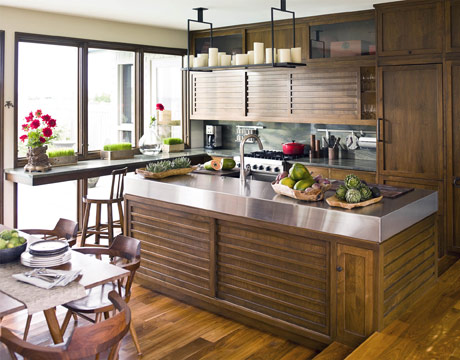
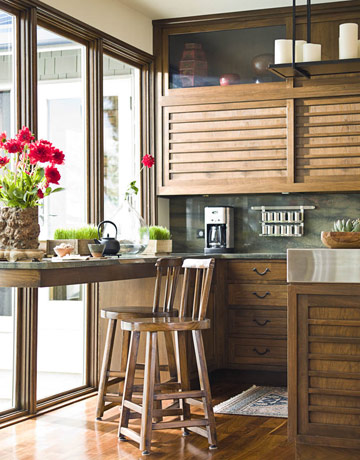
Compare the details of the iron work and the wooden joinery on these new cabinets with the details on the antique ones above. Pretty amazing how the dishwasher has been disguised.
Modern day cabinet companies such as Greentea are also looking to tansu for kitchen cabinet design. Kim at Desire to Inspire worked with them to create her dream kitchen. In addition to cabinets, she chose a free-standing tansu for extra storage.
And of course, there is no reason why you cannot use your mizuya tansu anywhere else in the house. They are great in the dining room, holding bed linens or clothes in the bedroom, hiding knitting stashes and all sorts of junk. Some later mizuya or choba tansu have glass panels for display – they too work perfectly in kitchens and dining rooms.
I have a large tansu, probably meant for shop display, but similar in shape to a mizuya tansu. I currently use it as a bookcase in my guest bedroom, but bought it with dreams of a large kitchen. Can’t you just see it in a kitchen, stacked full of transferware, glass and silver?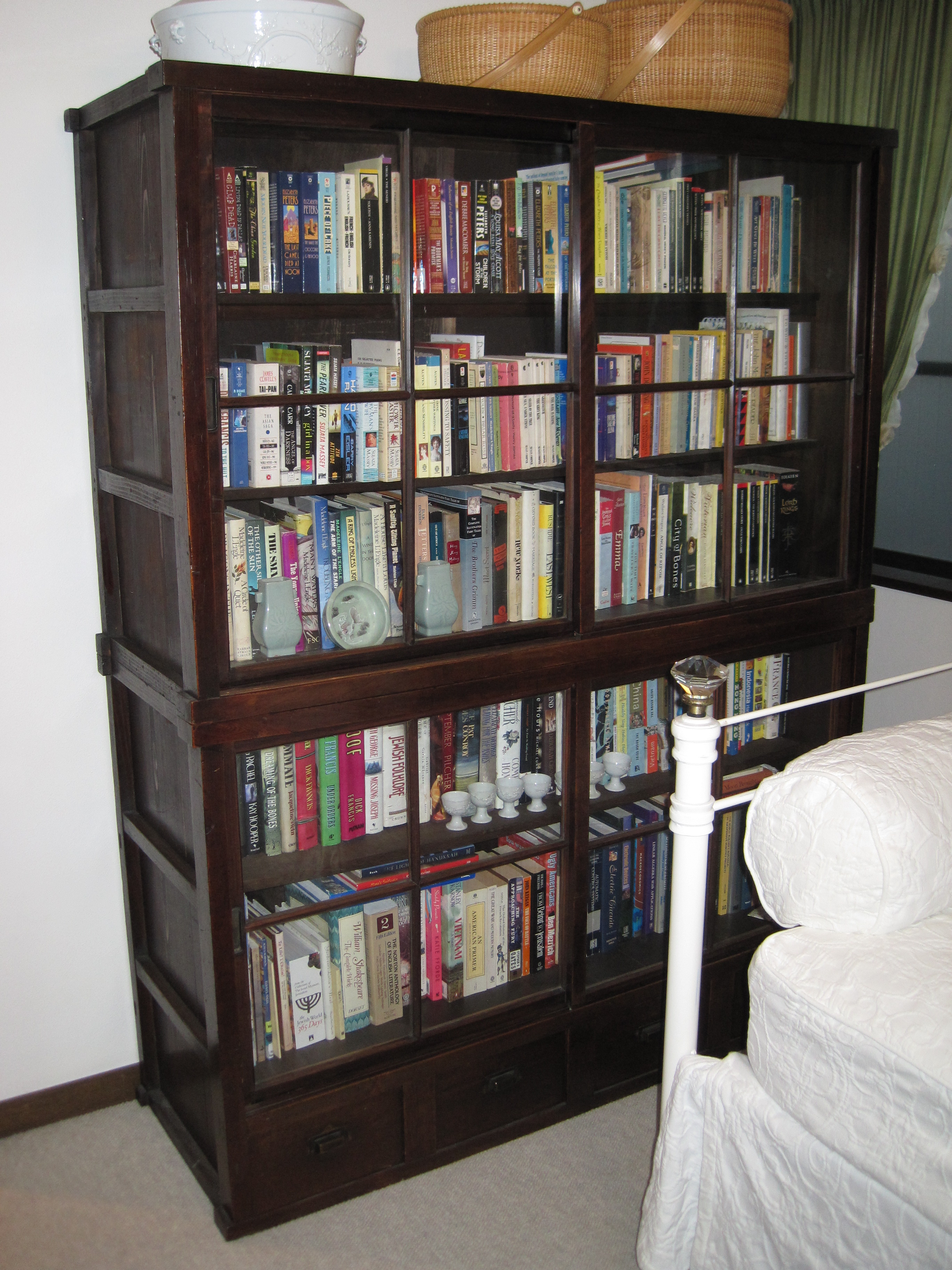
Image credits:1. V. Felgner, 2 & 3. Okura Antiques, 4. me, 5. via Chinoiserie Chic, 6-9. via House Beautiful, photo credit Eric Piasecki, 10-12. via Desire to Inspire, 13. K. Morganstern, 14. me

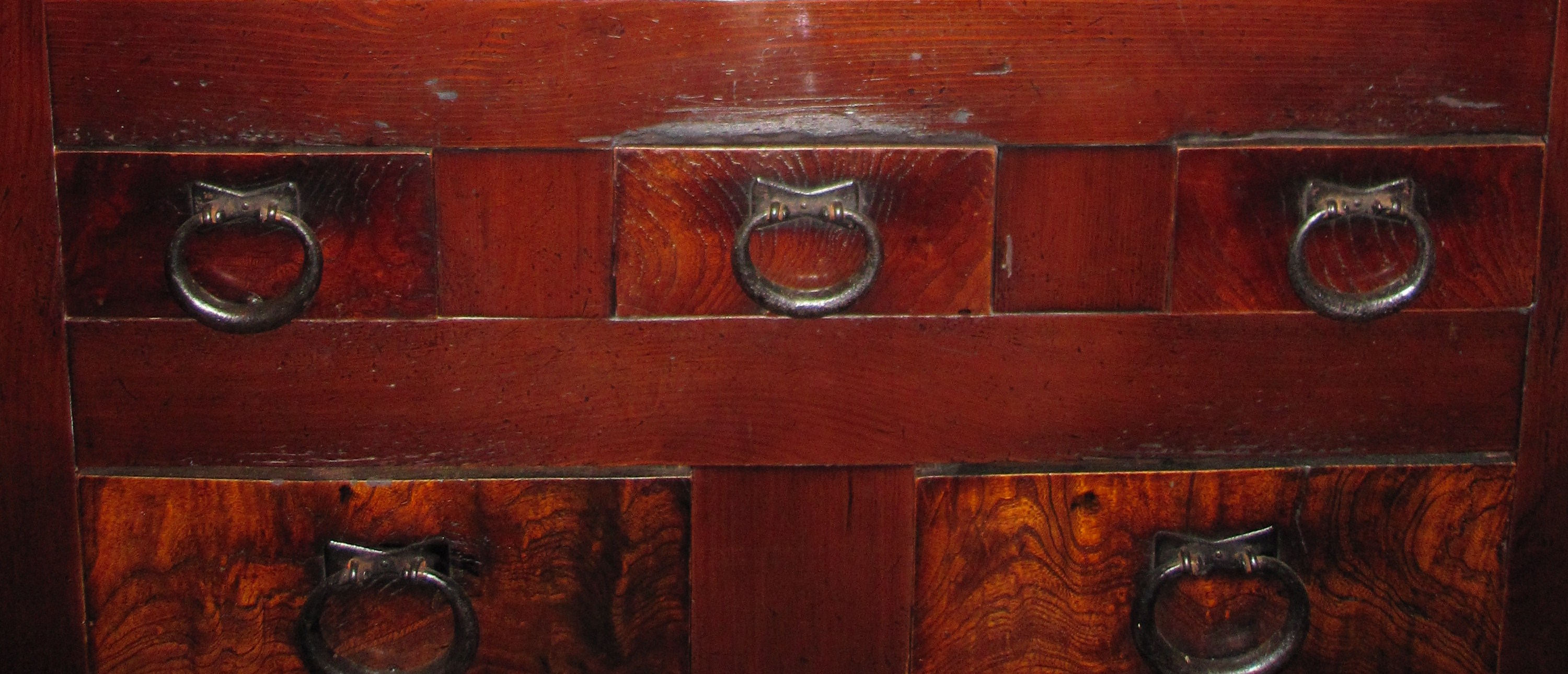
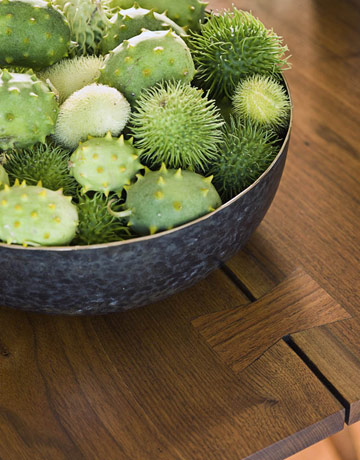
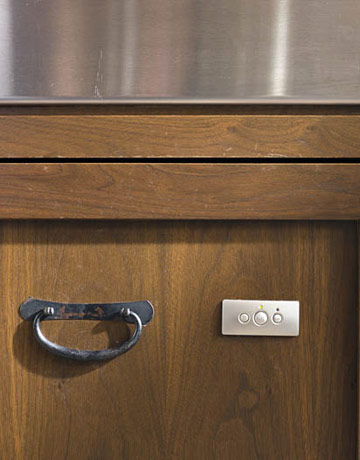
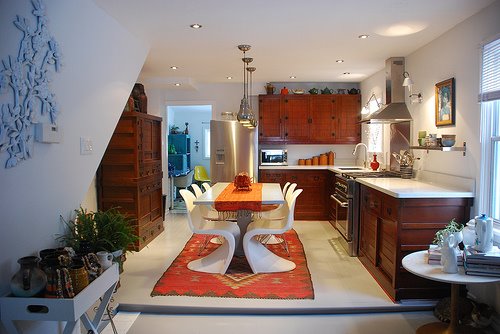
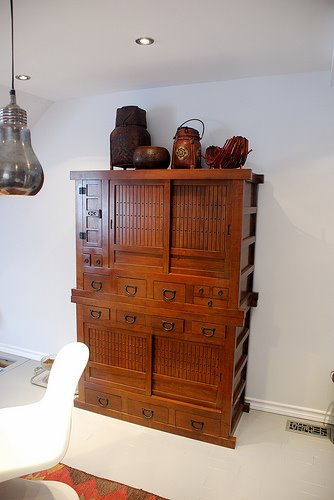
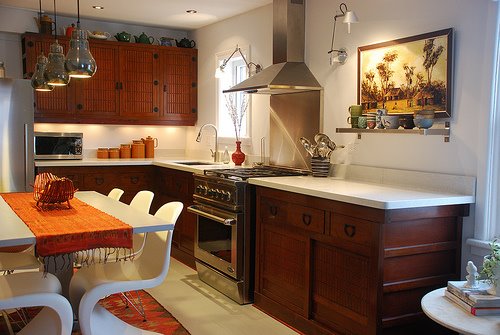
I love tansu and have been casually looking for one (or more). Now that I see the beautiful tansu that you have shown, I want one sooner than later. I will have to check out the shop in Chofu that you have mentioned.
Thanks Jacqueline!
Stephanie
Thanks Stephanie-
And I am headed over there in a week or two. Let me know if you’d like to come with me.
Are all Tansu so dark? The photo of Kedra’s Tansu would be a great china cabinet solution stateside for Julie who hates the hokey china cabinet look you see here in furniture sets. Much more interesting, but the wrong color wood – do you see lighter ones? I’d love to keep the china in the dining room, not in the basement.
Occasionally tansu are lighter, but most have oxidized over time and therefore the wood is darker. I’ll keep my eye out for a lighter one…
Shop Talk…Akariya Kanarusha « Tokyo Jinja
[…] Interested in tansu? You might want to read my post from last month “What’s Cooking? Tansu in the Kitchen”. […]
Enjoyed this article. You are a really good writer.
What’s Cooking? Red Lacquer Jewel Box Kitchens « Tokyo Jinja
[…] February 3, 2011 by Tokyo Jinja Since today is both Chinese New Year and Japanese Setsubun (Bean-Throwing Festival), I feel like a dose of red is in order. Coupled with requests for more Asian inspired kitchens, I have two sleek modern kitchens to show – both hinging on the color red – and both quite different from the rustic mizuya tansu (kitchen chests) I have shown in the past. […]
Sourcing Antiques for Michael Smith Interiors « Tokyo Jinja
[…] used the kitchen in this house in one of my earliest posts and I keep coming back to the perfection of this room. The sleekness of the modern streamlined […]
Where Do You Tansu? Part II « Tokyo Jinja
[…] Related Posts: Where Do You Tansu? What’s Cooking? Tansu in the Kitchen […]
A Bit of Cosmic Luck…Shrine Sale Synchronicity | Tokyo Jinja
[…] bedroom. I’m always preaching these large pieces in lieu of built-in cabinetry, whether it be in the kitchen (where they were designed for) or better yet, in the bedroom, where they can hold massive amounts […]